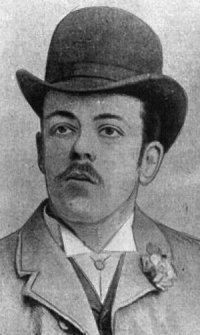Name Harry Lawson Role Designer | ||
 | ||
Died 1925, Harrow, London, United Kingdom | ||
Organizations founded Daimler Company | ||
Henry John Lawson, also known as Harry Lawson, (1852–1925) was a British bicycle designer, racing cyclist, motor industry pioneer, and fraudster. As part of his attempt to create and control a British motor industry Lawson formed and floated The Daimler Motor Company Limited in London in 1896. It later began manufacture in Coventry. Lawson organised the 1896 Emancipation Day drive now commemorated annually by the London to Brighton car run on the same course.
Contents
Early years
The son of a brass turner, Lawson designed several types of bicycle in the 1870s. His efforts were described as the "first authentic design of safety bicycle employing chain-drive to the rear wheel which was actually made", and has been ranked alongside John Kemp Starley as an inventor of the modern bicycle.
Motor promotor
Lawson saw great opportunities in the creation of a motor car industry in Britain, and sought to enrich himself by garnering important patents and shell companies.
In 1895, as one of many attempts to promote his schemes and lobby Parliament for the elimination of the Red Flag Act, Lawson and Frederick Simms founded the Motor Car Club of Britain.
Lawson and the Motor Car Club organised the first London to Brighton run, the "Emancipation Run", which was held on 14 November 1896 to celebrate the relaxation of the Red Flag Act, which eased the way for the start of the development of the British motor industry.
Lawson attempted to monopolise the British automobile industry through the acquisition of foreign patents. He acquired exclusive British rights to manufacture De Dion-Bouton and Bollée vehicles. He founded a succession of promotional companies including: The British Motor Syndicate — not to be confused with British Automobile Commercial Syndicate Limited. (BMS was the first of many of Lawson's schemes to collapse in 1897. Lawson also founded British Motor Company, British Motor Traction Company, The Great Horseless Carriage Company, Motor Manufacturing Company, and of E. J. Pennington, forming Anglo-American Rapid Vehicle Company. With his one great success, The Daimler Motor Company Limited, he bought in the rights of Gottlieb Daimler though this company too was to be reorganised in 1904. After a succession of business failures British Motor Syndicate was reorganised and renamed British Motor Traction Company in 1901, led by Selwyn F. Edge.
Legal problems
Many of Lawson's patents were not as defining as he had hoped, and from 1901 a series of legal cases saw the value in his holdings eroded. Lawson's patent rights were subsequently eroded through successful lawsuits by Automobile Mutual Protective Association. In 1904 Lawson was tried in court for fraudulently obtaining money from his shareholders and, after representing himself in court, he was found guilty and sentenced to one year's hard labour.
Lawson was completely out of the automobile industry by 1908 and disappeared from the public gaze for some years.
He reappeared as a director of Blériot Manufacturing Aircraft Company Ltd., the English branch of Louis Blériot's aircraft company. Lawson secretly acquired control of the company just before a public subscription to help expand its war effort. But the company soon found itself in breach of its contract with Blériot. When this came to light, the company was wound up and its director found guilty of fraud and dishonesty.
He retired from the public gaze and died at his home in Harrow, London in 1925.
